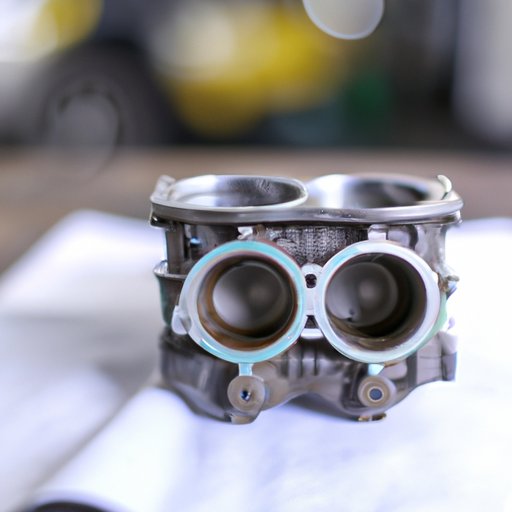Introduction
The Positive Crankcase Ventilation (PCV) valve is an essential component of any modern automobile’s engine. This small, but powerful device helps to optimize engine performance and efficiency, while also reducing harmful emissions from the exhaust. In this article, we’ll explore the working mechanism of a PCV valve, its benefits, and how to troubleshoot common issues with PCV valves in modern cars.
How PCV Valves Optimize Vehicle Performance
A PCV valve is designed to regulate the flow of air and vapors from the crankcase of an internal combustion engine. The crankcase is the part of the engine where oil and other liquids accumulate, creating a vacuum pressure inside. The PCV valve works by controlling this vacuum pressure, allowing fresh air to be drawn in and used to replace the stale air that accumulates in the crankcase. This helps to keep the engine running efficiently and reduce the amount of harmful emissions released into the atmosphere.
The PCV valve is typically located near the top of the engine block or in the valve cover. It consists of a small metal canister with a spring-loaded valve inside. When the engine is running, the valve opens and closes as needed to regulate the flow of air and vapor from the crankcase. This helps to maintain optimal air/fuel ratios for efficient combustion and reduce the amount of unburned fuel escaping into the atmosphere.
By controlling the flow of air and vapor from the crankcase, the PCV valve also helps to reduce the buildup of sludge and residue inside the engine. This prevents the engine from becoming clogged with debris and improves overall engine performance. Additionally, the PCV valve helps to reduce the amount of noise generated by the engine, making it quieter and more pleasant to drive.

The Benefits and Drawbacks of PCV Valves
Overall, the use of a PCV valve provides many benefits for modern vehicles. It helps to improve engine performance and efficiency by regulating air and vapor flow from the crankcase. It also helps to reduce the amount of harmful emissions released into the atmosphere, making it an important component in any vehicle’s emission control system. Finally, it helps to reduce the amount of noise generated by the engine, making it more pleasant to drive.
However, there are some drawbacks to using a PCV valve. Over time, the valve can become clogged with debris and residue, which can lead to engine problems such as poor performance or increased emissions. Additionally, the valve itself can break down due to age or wear and tear, leading to similar problems. To prevent these issues, it is important to regularly inspect and maintain the PCV valve in order to ensure optimal engine performance.

Troubleshooting Common Issues with PCV Valves
If you notice that your vehicle’s engine is not performing as well as it should, it could be a sign that the PCV valve is not functioning properly. To diagnose the issue, start by inspecting the valve for signs of damage or debris buildup. If the valve appears to be clogged or broken, it will need to be replaced. Additionally, check the hoses connected to the valve for signs of leakage or damage, as these can also cause problems.
It is also important to regularly change the oil in your vehicle to help maintain the PCV valve. Oil changes help to reduce the buildup of sludge and residue inside the engine, which can lead to clogging of the valve. Additionally, make sure to check the levels of oil and other fluids in your vehicle regularly to ensure that they are at optimal levels.
Conclusion
The PCV valve is an essential component of any modern automobile’s engine. It helps to optimize engine performance and efficiency, while also reducing harmful emissions from the exhaust. By controlling the flow of air and vapor from the crankcase, the PCV valve helps to keep the engine running smoothly and reduce the amount of noise generated by the engine. Additionally, regular maintenance and inspections of the valve can help to prevent common issues such as clogging and breakdowns.
Overall, the PCV valve is an important component of any modern vehicle and understanding how it works can help you to optimize engine performance and reduce the risk of engine problems. By following the tips outlined in this article, you can ensure that your PCV valve is functioning properly and helping to keep your vehicle running smoothly.
(Note: Is this article not meeting your expectations? Do you have knowledge or insights to share? Unlock new opportunities and expand your reach by joining our authors team. Click Registration to join us and share your expertise with our readers.)
